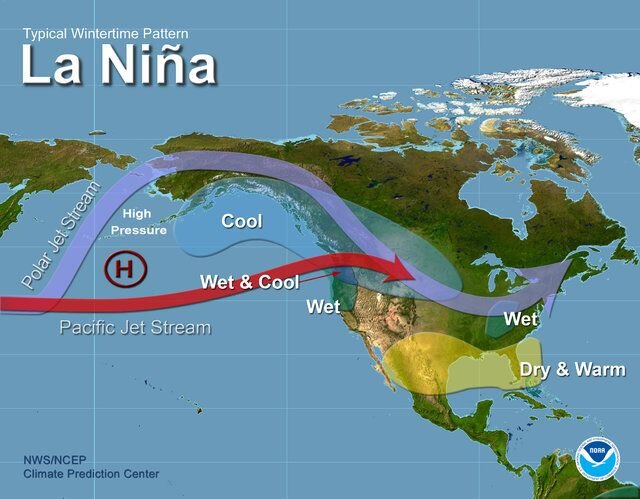Will Iran go through La Niña episode?

TEHRAN –According to recent forecasts, there is the possibility of either neutral conditions or a transition into La Niña.
Concerning the fact that the cycle is currently moving from El Niño to La Niña, Sadeq Ziaeian, an official with national center for forecasting Iran metrological organization, said: “There is over 60 percent chance for neutral conditions and 38 percent chance for experiencing La Niña in the country” by August 20, ISNA reported.
El Niño Southern Oscillation (ENSO) is a climate phenomenon that has three parts El Niño, La Niña, and neutral phases.
El Niño and La Niña are opposite extremes of the ENSO, which refers to cyclical environmental conditions that occur across the Equatorial Pacific Ocean.
La Niña is characterized by unusually cold ocean temperatures in the Equatorial Pacific, compared to El Niño, which is characterized by unusually warm ocean temperatures in the Equatorial Pacific.
These changes are due to natural interactions between the ocean and the atmosphere. Sea surface temperature, rainfall, air pressure, and atmospheric and ocean circulation all influence each other.
Ziaeian pointed out that in addition to the ENSO, other cyclonic events such as Acetic Oscillation (AO), North Atlantic Oscillation, (NAO), Madden-Jullian Oscillation (MJO), and the Indian Ocean bipolar affect Iran's atmospheric condition.
Under optimal conditions, when La Niña dominates, there is a 60 percent likelihood that the fall season in Iran begins later, and the probability of facing a dry year increases.
Precipitation close to normal
In June, the head of Metrological Organization said, “After four years of consecutive low precipitations, the amount of average rainfall is getting close to normal long-term figures.”
“Currently, the country is witnessing less than one millimeter, about 0.3 percent, short of long-term rainfall,” IRIB quoted Sahar Tajbakhsh as saying.
El Niño-driven floods
El Niño was the primary driver of extreme rainfall in April and May that caused widespread flash flooding across Iran, as well as Afghanistan and Pakistan, doubling the chance of extreme rainfall, a new World Weather Attribution study found.
Throughout April and May, West Asia was hit by several storms. Flash floods killed at least 500 people in Afghanistan, 124 in Pakistan, and 18 in Iran, destroyed thousands of homes, and wiped out crops, worsening food shortages and threatening agricultural livelihoods.
WMO reports on Iran
On April 23, the World Meteorological Organization (WMO) released a report on extreme events such as floods, drought, dust storms, and strong winds that affected the country, ISNA reported.
According to the report, below-normal rainfall in most regions of Iran for the third consecutive year in 2023 has led to widespread drought in the country.
The eastern half experienced severe rainfall shortage within the year. Decreased rain and severe drought in the region along with above-normal temperatures have resulted in the drying up of the main inland lakebed, the Hamoun Lake.
In Iran, autumn 2023 was much warmer than normal with severe shortages of rainfall throughout the country, the report added.
Severe dust storms hit most parts of Asia. In mid-September, a dust storm affected Iran, Afghanistan, and Pakistan causing serious health problems.
High winds in the southeast of the country from September 18 to 25, caused severe dust storms resulting in severe injuries and hospitalization.
Levar wind along with the dust from dried Hamoun wetland affected the region, causing adverse health effects, closure of schools, transportation hazards, and damage to crops.
According to the report, the flood that struck Astara city from September 17 to 19 significantly affected 300 households. The flood resulted from intense and prolonged rainfall in Astara on September 18. Within a span of 12 hours, 220 mm of rain was recorded causing profound damage.
Leave a Comment